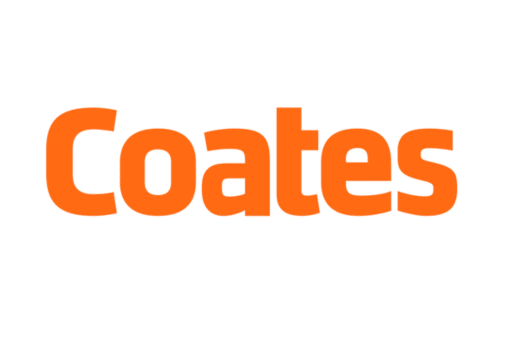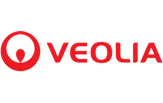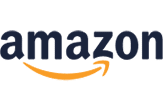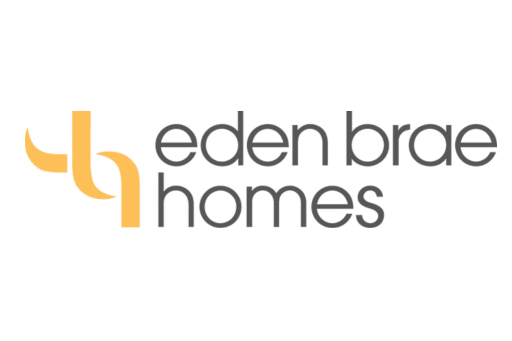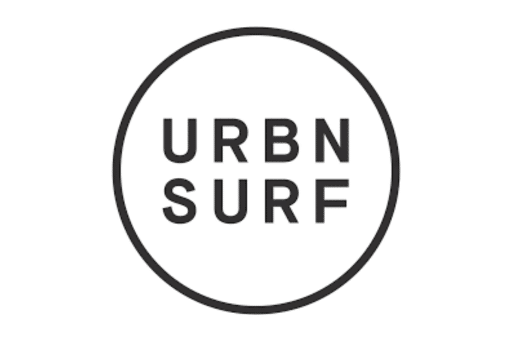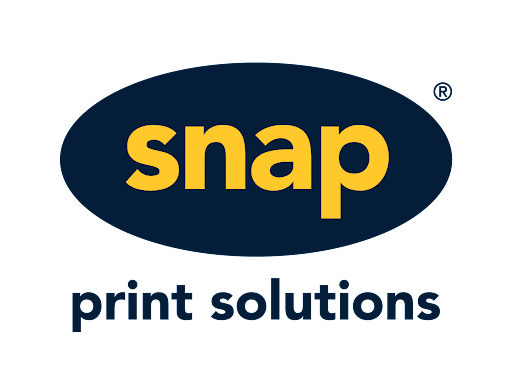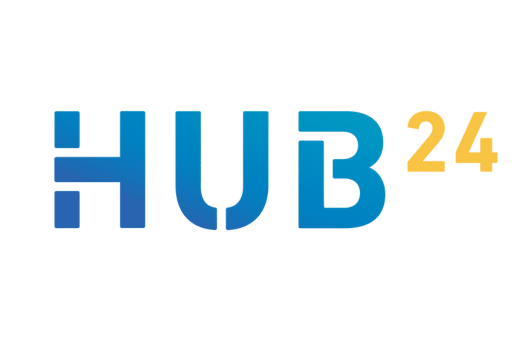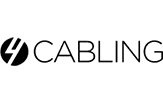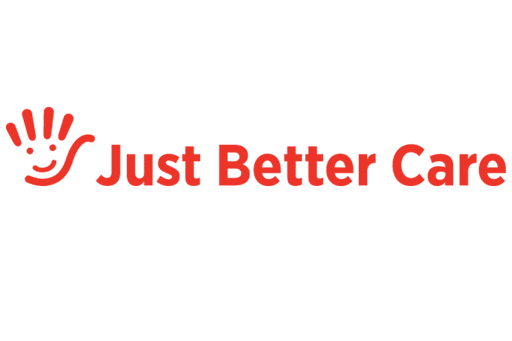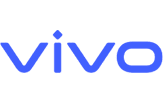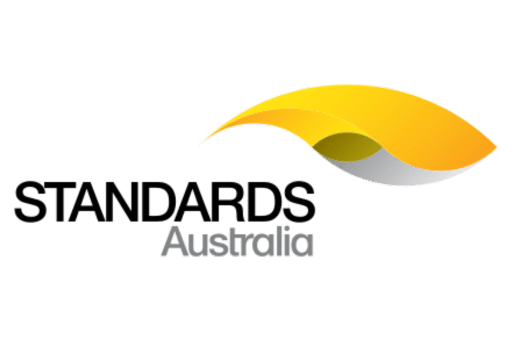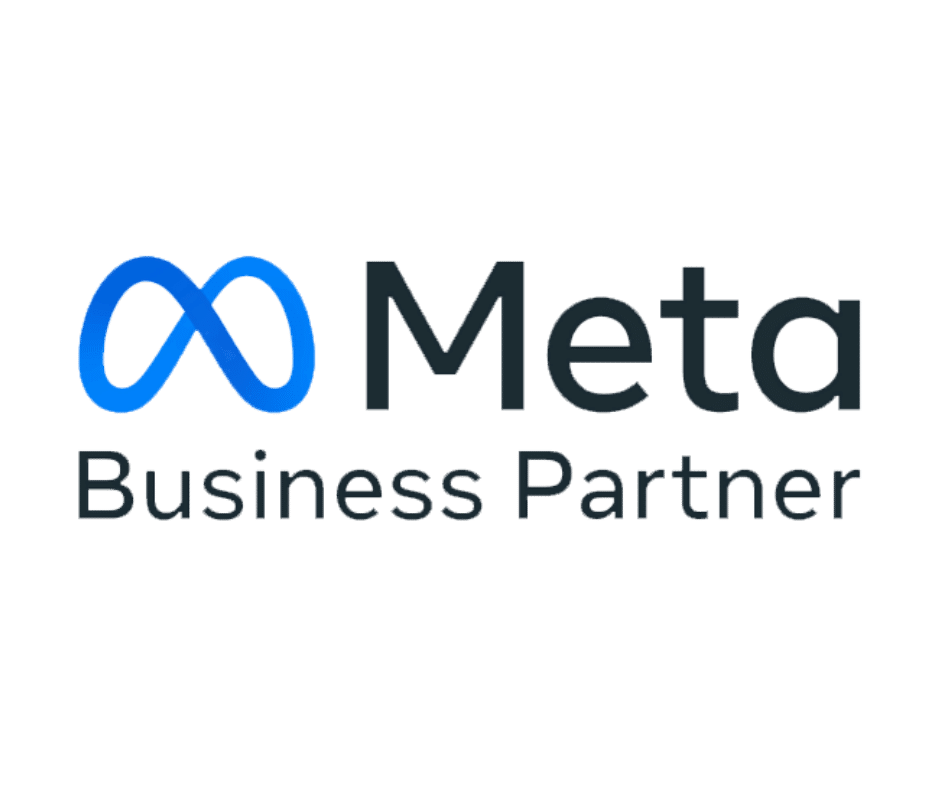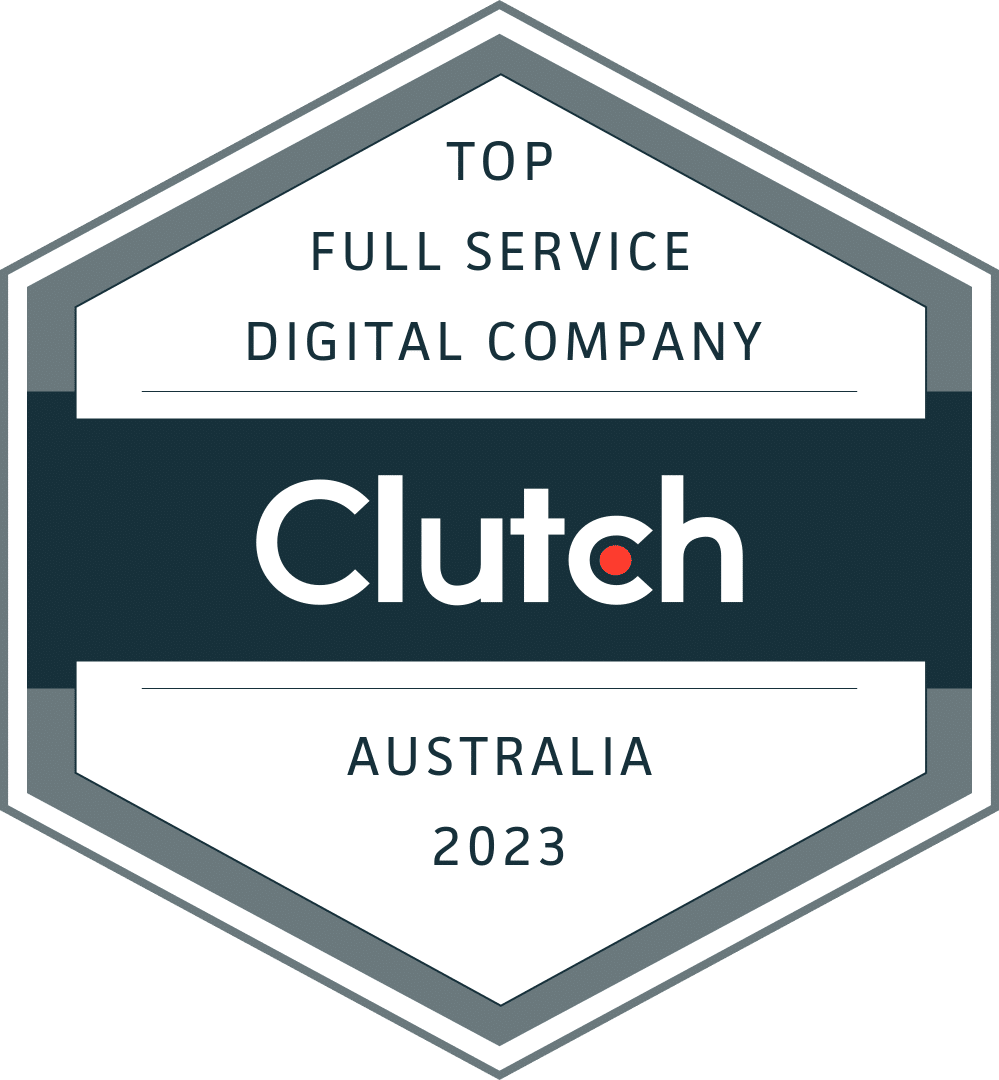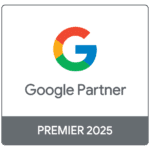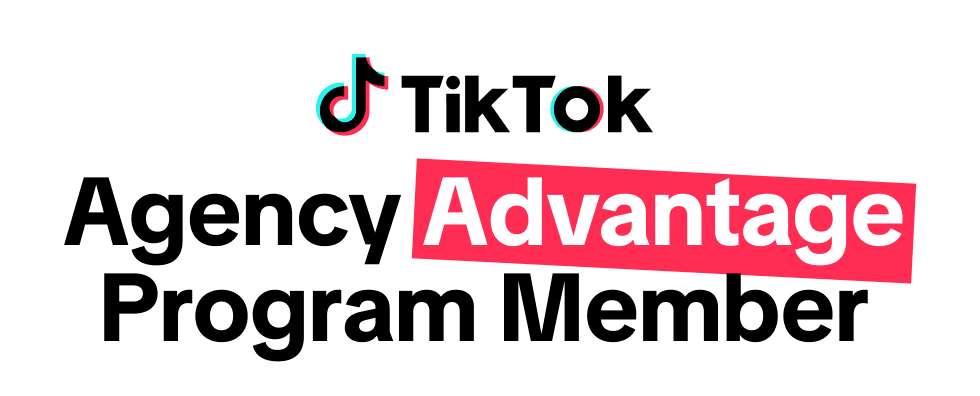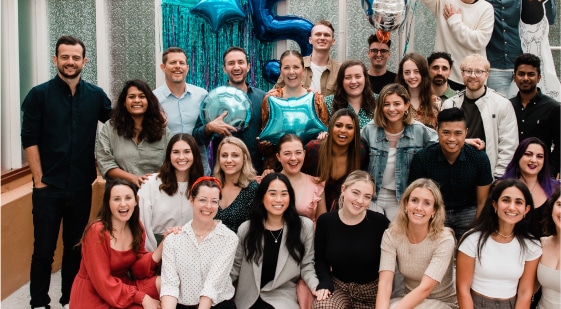Balancing Brand and Performance
Episode Description:
Three agency founders discuss how marketers should balance brand building v performance marketing. The value of creating a long-term marketing strategy and how to educate stakeholders on the role and relationship between longer term and shorter term marketing activities. As well as the importance of telling a story to effectively connect with your audience.
Key Takeaways:
- Brand v performance: how to get the right mix between the two.
- Demonstrating how investing in brand makes performance channels work better.
- Benefits of brand building during a recession/economic downturn.
- Importance of brand for businesses where the vast bulk of the market isn’t ready to purchase.
- Airbnb case study: shift from performance to customer education.
- How to allocate budgets between content creation and media buying.
Featuring:

Tristan Velasco

Lindsay Rogers
About the Guests:
On the podcast this week we have Co-Founders of branding and content agency Chello; Lindsay Rogers (Managing Director) and Tristan Velasco (Creative Director). Founded in 2014, independent agency Chello has worked on award-winning creative projects for clients including Shopify, Uber Eats, My Muscle Chef, Mirvac, Qudos Bank, PWC, Volkswagen and the Australian Government. You can follow both Lindsay and Tristan on LinkedIn or visit the Chello website.
Transcript
James Lawrence: Welcome back to this Smarter Marketer podcast. I'm joined today by the two founders of brand and content agency Chello, Lindsay Rogers and Tristan Velasco. Guys, welcome to the pod.
Tristan Velasco: Morning.
Lindsay Rogers: Hi.
James Lawrence: Hello, friends. It's good to have you here. So Chello was founded in 2014. An independent agency that has worked on award winning creative projects for clients like Shopify, Uber Eats, My Muscle Chef, Mirvac, Qudos Bank, PWC, Volkswagen and many, many more. Rocket and Chello have worked together on a range of projects now, including the launch and rollout of LIV Mirvac, which featured on the pod a few weeks ago. And we've kind of talked over the last year or so about getting the guys onto the pod. We'll often catch up, and I don't think we disagree on stuff, but I think we have different perspectives. We've kind of got an agency that's much more in the brand content, creative side of things, and then you've got us nerds sitting over at Rocket, plugging away into, you know, the technical digital space that we play of SEO and Google and all those fun things. But I think in many ways we see marketing in very similar ways, but we have probably very different perspectives on what we say and client challenges. So a wide ranging conversation; brand versus performance, digital versus offline, budgets for creative versus budgets for performance. But for us, it's just three agency owners coming together to just share what we see working and what's not working in 2023. And hopefully listeners to the pod can kind of garner something out of the conversation. So thought before we jump into the conversation, maybe just, yeah, talk to us about Chello and what you guys do and where it all started and where it is now?
Lindsay Rogers: Thanks, James, and good to be chatting with you. I think at the core of it, we've got similar values and how we approach brand sort of problems or brand work. And it's and it's great to collaborate. And if anyone hasn't listened to the podcast where you interview Jade at Mirvac, definitely worth listening to. Chello; we do two things. We do branding and deep brand work. So across brand strategy and, you know, research into insights and often with scale ups that are sort of at an inflection point where they've sort of grown to a certain point in market, proven their market fit. But the brand that has served them to date sort of isn't the right brand to serve them into the future, often with ambitious goals, whether it be new funding or changing market conditions. And the second thing we do is content production and content works. We produce a lot of campaigns video, animation, design, copy all in-house. They're not mutually exclusive. Oftentimes our brand work runs all the way through to content, but as in the LIV Mirvac case, where we did a lot of deep - and continue to do - a lot of deep brand thinking and iterative work all the way through to creative execution. But yeah, we're ten next year.
James Lawrence: You guys are old.
Lindsay Rogers: it makes me feel really, really old. I mean, where is the walking stick?
James Lawrence: You're all grown up. Well, both of you still look in your 30s. No, sorry. You're 20s.
Lindsay Rogers: Mildly offensive.
James Lawrence: No, I was going to.... I just messed up my words. I was going to say, you look like you not 30. And I stuffed it up. Okay, I knew this would be a fun one. And I guess Tristan your role in the in the agency?
Tristan Velasco: So. Creative director; I sort of manage everything that comes in and then sort of, really push the creative team to develop the work that we do and essentially what goes out. I look after outgoing. We're not really specific in the in the industries that we work with. We're quite diverse. And that has always been, I guess, an intentional strategy for us because there's obviously learnings you can sort of incorporate across the industries that sort of help push and shape the work with your better.
James Lawrence: Nice. Let's just tackle the hardest and most difficult question first or topic or theme; brand versus performance. So a lot of the work that you're engaged to do is to take an existing brand and kind of move it and get it out there again, I guess, or it's to take something new into market. Clients will often approach Rocket, which is I want performance. You know we need leads. We need them tomorrow. There's obviously a need for both. There's a need for brand development, continuing to invest in brand over many years. Equally, I think we'd all agree there's there's a role for performance. So what do you see working best? Like your best clients, the most successful, the work you've been involved with which has had a great commercial outcome, like how do clients approach the balancing of the two?
Tristan Velasco: As you sort of mentioned, it's always going to be a combination of both. I think the reality is for a lot of clients is, the pressures of the numbers and needing to be able to hit those targets on a quarterly, you know, yearly basis. I think quite often it's also because a lack of confidence in the brands. Not knowing what story to tell, what narrative to tell. When we sort of work on brand building projects with clients, they get a new sense of confidence, you know, in regards to how they present themselves to market. I mean, My Muscle Chef was probably a typical case of that, where at the time they sort of approached us there at a level where they'd sort of hit the ceiling in regards to their growth. We really sort of worked with the research partners to identify the key insights around their audience; routine obsessed, they were well educated in the fitness sort of space. When you sort of go narrow and go deep in regards to who you're targeting and the story that you're going to be telling to those audiences, you'll turn up in a much more different way. And any confidence behind investing in brands becomes heightened, I think. Then how do you then sort of, you know, tell a connected story from brand through to performance?
James Lawrence: Yeah, that's a good point. And we were talking about it before we started recording. And this is definitely not Rocket is pushing for performance and Chellos pushing for brand. Like one of my absolute bugbears and frustrations. And it's so hard is that marketers will come to us and say, you know, good news, I've got all this budget to put into a campaign because the sales team needs leads or, there's business imperatives and let's get into market. In the next quarter, what do you think is possible? And generally the answer is like the best investment in your marketing is to invest in your brand. And we're actually talking about - we were kind of exchanging emails a couple of months ago with a mutual client - and was sending over a lot of that research from Benayoun Field around the whole 60/40 rule, which is; 60% of your marketing budget, should be going into brand activity, 40% should go into your activation, lead gen, performance, marketing, whatever you want to call it. And 100%, that's not a fixed rule, right? Like depending on the buyer journey for that particular business, depending on the imperatives of that business. I definitely feel that there's a massive overweighting towards short termism and performance, and I probably have the agency that has the vested interest in that. But there's no doubt that the most successful performance campaigns that we run are for clients that have historically invested really heavily and continue to invest in brand. I think often it's not. I think the marketers often understand that, but they're not armed with the information to be able to fight that of the food chain.
Lindsay Rogers: Yeah. Think all the work any marketer is working on should be performance, right? It's sort of that brand building and brand work often takes a bit more time. It's a bit more on the proactive rather than reactive. It's, you know, investing into solid foundations for a 3-5 year horizon or, you know, test and learn iterative approach in a two speed format. But I think, that whole idea of sort of brands that have invested during downturns over the years, I think it's Ritzon that talks about; they didn't necessarily see an uptake in voice during the downturn itself, but by continually investing through a downturn at the other end, they exponentially increased because of the salience and cut through during a downturn. So I think sort of having consistency and having a voice that is bedded in deep insights, whether it's around audience or category or the need that you're solving and moving away from just, although features absolutely are part of a funnel, moving up the chain in terms of the broader benefits and the problem that you're solving and how what you're delivering. Whether it's product or services benefiting society, all of that work, it's longer, it's often more proactive. But over time those foundations, they absolutely drive performance at the at the sharper end of the funnel.
James Lawrence: Yeah for sure. Like the whole 95/5 rule are all around - and that's a B2B, I think it was Bass Institute that pump that out. And I think then LinkedIn's kind of content B2B team went heavy on that last year, which is that in a B2B environment, 95% of the market isn't in market at any moment in time. Same in cars, right? Like I think the average is probably a little bit less now, but it was once every once every ten years someone buys a new car, right? So the idea that you're only marketing end financial year sales and whatever else. Just ridiculous, right? As why car brands forever in a day of invested in marketing to teenagers now knowing that in 20 years time they'll buy a car kind of thing. And we see it. When we're running performance for a brand that is strong, has built over the years, you know, brand building. If it's seriously, we will just get better click through rates, better conversion rates, better ROAS, all those digital metrics which you kind of think would be pretty consistent just depending on how well an ads written or whatever it might be. But it's kind of just not the case.
Tristan Velasco: I think in regards to that, there are sort of tools that we work with, with marketers, just to really establish what is the playbook, what are we actually saying? So when you're sort of developing performance ads, it's not just for performance sake, at least it sort of connects to, you know, the benefits for the customer, the value propositions in regards to, you know, the role the brands play. And then ultimately it's being committed to that message. And the stronger that connection from proof points through to value prop, there is, the more consistency that you'll get in regard to that brand story overall.
James Lawrence: You mentioned Mark Ritson. Lindsay, I don't know if we're on the same webinar, but he did a webinar probably I think it was about six months ago now. And he kind of made a really interesting point. He was kind of saying that excellent awareness or top of the funnel advertising can create short term demand, but very rarely can excellent short term demand, bottom of the funnel advertising create long term brand benefit. Which I thought was kind of an interesting, interesting perspective. Really segways nicely into the Airbnb case study, which we're kind of talking about. And that's an interesting one if you want to kind of talk about that?
Lindsay Rogers: I mean, most marketers will obviously be invested in how Airbnb's marketing and brand strategy itself. But an interesting shift over the last few years, they talk really publicly about shifting from a pure performance play into not even brand building. They talk about educating their customers and they've got sort of three different priorities around whether it's getting host themselves to be traveling and experiencing more or whatnot. Choosing the route around educating the audience rather than selling to. And we see a lot of this thinking and a lot the content strategy work that we do around content pillars and how can we be interesting, useful, unique, differentiated, and distinctive based on the solid foundations of a brand strategy, but delivering in new and interesting ways?
Lindsay Rogers: And over the last couple of years, Airbnb, they're owned and earned channels have absolutely skyrocketed. You know, they published over 600,000 sort of press articles last year alone. That is just a monstrosity of people talking about the brand. Ultimately great brand building is, you know, the synonyms or the words in which people associate with you. And hopefully from Airbnb's perspective, it's that feeling of belonging anywhere you go. There's a certain level of expectation and obviously all their product features reinforce that. But coming back to clear brand foundations into content strategy, there's a great example and favorite sort of brand of mine called Bed Threads, who I have absolutely no affiliation with but just really admire their content strategy and their brand from the outside and their 100% linen/cotton sheets. And they've since moved into homewares. But what I love about their brand and the pillars, they have a fantastic series of EDMs and a whole part of their website around that's called The Journal, and they explore just really interesting pillars.
Lindsay Rogers: I think I probably typify their core customer, and I do own a fair few of their products because, you know, find it so compelling. So it does lead and drive commercial results because I've bought into the stories they tell and the associations they deliver. But from Airbnb's perspective around educating the customer, I think Bed Threads does a great job at inspiring. I think the content pillars will be around sort of architecture, interiors, lifestyle. You know, they feature recipes and honestly just cool stuff that I kind of want to be either associated with or I want to learn from, or I'm inspired by or even just visually really beautiful. They, you know, great images and great interiors, but it's just so well curated. It feels like they are inspiring me rather than selling at me, deeply embedded in inspiration or education. In Airbnb's case, that drives me as a customer to tell other people about them and have a really strong few synonyms, you know, and favorable words towards the brand that think, for me is sort of a huge marker of brand success and salience.
James Lawrence: It's funny that you described yourself as their ideal customer. I'm also one and I don't think I've ever mentioned it before. I sit there getting their EDMs and I'm pretty ruthless with unsubscribing from purchases. And I'm getting content around food and lifestyle from a brand that I bought linen from. And to me, it makes no sense that I would continue to receive the content, but I love it. And it's awesome. And it's really funny that you said it.
Lindsay Rogers: And how many EDMs can you can you say hand on heart that you love getting and when they're in your inbox? There's that. And then there's a trend done by Wunderman Thompson, other agency group. They do a trend insight one that I can just never bring myself to delete. I'll have to read every email because it's such insightful, interesting, curated content that's really useful. You feel like you're learning or you're inspired or you want to send it on to someone. And think if you can keep those really tangible feelings as a consumer and translate them, then you know from a marketer's perspective into actionable items on behalf of your own organisation. That's really compelling.
James Lawrence: That's right. And all of the studies show that the value of a strong brand is that you can charge a higher price. You'll close your deals quicker from the brands that aren't in market that people aren't thinking of. And when it comes to the next time to purchase in that category, the likelihood of doing so with them is so much higher. Do you guys want to ask me some questions? You said you're going to flip it around at me at some point, and play podcast host.
Lindsay Rogers: What is the hardest thing about, when you're working with marketers from a performance perspective, what is the sort of what's the hardest thing or the shift that you try to make most often, when it comes to long termism and short termism? What is it? What's the journey that you find yourselves on constantly?
James Lawrence: I think it's got us starting from that top level right, which is; what percentage of my revenue should I spend on marketing? And there's kind of rules of thumbs on that. Is it 10 to 13% on average? But obviously if you're in, I don't know, small professional services, you're probably spending much less. And if you're in FMCG, you're probably spending more. Okay. Let's agree. Let's agree on that to start with. What percentage should we be spending on activities which are going to be really valuable longer term, build our brand, do all those great things? Versus what percentage should we be spending on making sales generating leads? Now obviously every business person, every marketer would happily just sit there generating more leads and more sales. But it's not how the world works. So, you know, probably looking at that 60/40 rule, 70/30, like, how does it work? What should go into digital and what should go into offline / above the line type activity? I think it'd be good for us to talk about that maybe after this. You guys have, you're not a media agency, but I think you probably have more exposure to kind of those types of decisions.
James Lawrence: We sometimes depending on the size of the business, we're working with, some of our smaller clients, we're much more involved in all those discussions. But if we're dealing with a much bigger client, then they'll come to us and say, we've got this budget for search or social or whatever it might be, how do we best kind of deploy it? You know, in that instance, if someone comes to us and we work with some household brands, right? And they'll come to us and say, here's a Google Ads budget, the brand stuff is already happening. There's TV ads happening, there's back of bus. And so in that instance, it is probably more of a technical discussion. It probably is more we're looking at your Google Lens instance and it's a dog's breakfast or it's actually being run really, really well. And then it is probably more technical in nature as to kind of the recommendations, but I think where that question was coming from is more when it is, we're ceding to rocket our digital marketing for the next 12 months, and these are our goals and kind of go off and do it.
James Lawrence: And it is often an education process of the conversation that we're having now. Which is to say you don't have the cut through or you don't have the brand that your competitors do, and you need to be investing in sensible, long term activities. And they still should be measured but measured, probably with different metrics. And so it is about - like SEO for us - pretty much every study on SEO shows that it's a higher quality visitor than through paid search. So the obvious thing is I want traffic, I want tomorrow, I want leads bye bye bye. Our clients that have consistently invested in organic, and to do that generally, it's the equivalent of brand building versus demand gen. You're basically saying, I'm willing to invest now for things that won't happen for 12 months. And that's not to say you won't get green shoots and potentially return on investment sooner, but it's an investment in the future. So you kind of having to build that story as well. Like most traffic goes to SEO, I think like 70% of traffic that gets moved around to Australian businesses each day is happening through Google Organic, right? Google Search is like 10%. ISocial is really, really small, then you get kind of direct. So if you actually want to move volume, you're doing it through SEO. But that's an investment in the future. And it's also a leap of faith because if you get it wrong, you never get it.
James Lawrence: And then things like email marketing, like that's the example you just described. Like it is an awesome tool to generate return on investment. And generally it is the cost effective channel to drive ROI, is through email marketing. But to actually generate your database and to have them bought in and nurtured is an investment in time and in content, whatever else. And then within what are viewed is more performance channels like paid search, paid social, even within that, like often we're trying to re-educate customers. If you're B2B and you're in LinkedIn running paid ads, you can't really judge it through MQLs, SQLs, opportunities opened unless you're in a really transactional space. Like if you're in B2B, SaaS, or you're trying to sell manage IT services, it's about generating eyeballs, impressions, clicks, downloads of a white paper to then be nurtured. So it's probably really similar themes. And it's a bit art and it's a bit science. Because it depends on the client. Depends on what where they're at. If you're dealing with someone that's quite sophisticated, they've been doing this for five years, doing it quite well, it's a different conversation to someone that's coming into a business that's needing to scale and has these very strong plans as to where they need to get to, and often it's about kind of setting expectation properly.
Lindsay Rogers: What about in a downturn? How how much are you diagnosing the sort of the path forward versus clients having a plan themselves? And specifically during an economic downturn, what channels or ways of working do you find to have been most effective?
James Lawrence: When Covid first hit, we were kind of, like lots of businesses, were freaking out. It's going to be a recession. How do we plan for this? How do we for ourselves, but also for our clients? And we actually we published at the time, I think it was really good. And it still is good. It was kind of the Recession Marketing Manifesto, and we looked at a lot of research. Because Australia hadn't had a recession since the early 90s. So there's very little, there's nothing in terms of digital in Australia to lean on, but also very little in Australia for a long period. So a lot of the research, and you touched on it before Lindsday, was basically saying; brands that have cut their marketing budgets in poor economic conditions, come out of recessions tremendously worse than those that hold firm. So it's not self-serving marketing stuff. It's actual like Harvard Business Review studies, academic papers coming out of Europe.
James Lawrence: And the reason being is that it's what most people do. They cut their budgets. But if you hold firm and you continue to invest in brand and being in the mind of your potential customers, that when inevitably things pick up, all the benefits of brand building are there. And I think one of the really interesting case studies was Toyota. Toyota’s growth in America was like largely put down to them continuing to invest in the early 70s when there was some huge downturn in auto. They kept investing, kept investing, and the car buyer journey is a long one. So all these brands were pulling out, but no one would have bought the cars anyway. I think as it relates to digital, it's also at the moment very sector driven, like there's certain sectors that are so decimated that it's hard to make an argument that you should invest in either, if literally, you know, on the verge of insolvency. But for brands that are kind of rightsizing in tough sectors, it's about them. Well, okay, the pie is a little bit smaller for marketing. If your performance channels are working, then obviously you want to keep driving those channels forward. But a lot of the digital thought in that kind of instance is, if your performance is not going as well as it was, you might shape that down, but you should continue to be investing in your SEO, your content strategy, email marketing etc. Because whether it's six months or 12 or 18, things change, right? And you don't want to be the brand that cut everything and then you're starting from scratch.
Lindsay Rogers: It's an interesting kind of duality. I mean, our customers, as in that work with you guys and work with us, are similar senior marketers that have really great depth of knowledge around their product or service and marketing. As a prerequisite. But the kind of duality between grit and flexibility, I find really interesting. So what you just talked about there around grit during hard times and in continually investing, and ultimately, if your competitors are pulling away, your media spend should go further. There should be more opportunity for you to fly higher post downturn. But at the same time, us and you talk a lot about iterative approach to creative, say like, let's test and learn and see from a campaign perspective what's working. And then Jade talked about this on your interview with her, and then drilling down and often, quite surprisingly, that the grammar in an ad works really well for younger audience, you know, things that we don't expect and being flexible enough to follow the insights. I just found that kind of the duality interesting in terms of what makes a great marketer for agencies to work with is somewhere in the middle of grit and focus. And, you know, in a brand from a brand perspective, going deep and really saying no to everything that is not part of the brand DNA, but at the same time having the flexibility to learn and respond to, whether it's market conditions like Covid or iterative approach to creative, somewhere in the middle, there is that sort of utopia. And if only there was a handbook every time.
James Lawrence: Yeah, that's it. And I think the grit or the confidence personality to just continue to push back to stakeholders in the organisation that don't get it, arming yourself with data and science and academic studies and whatever it might be to kind of say, this is just my perspective. And of course, we all want sales tomorrow. But the reality is roughly, I should have a budget that's roughly this percentage of our revenue. And here's the innumerable studies that prove that businesses spend between X and Y on marketing. Then from that, this is where it should be apportioned roughly 70 / 30, 60 / 40, depending on where you're at. But then I think it's actually having kind of the flexibility or the acumen or whatever it might be to go, well, yeah, the way that I'm then spending that money makes sense. And having the foresight to invest in the long term stuff that you have the confidence in, but then change the short term stuff.
Lindsay Rogers: We have an archetype, a Chello, where we talk about an optimistic challenger. And it's exactly that people that view things as an exciting opportunity, marketers that view things as an exciting opportunity, but are willing to kind of roll up their sleeves and and get involved in the challenge.
Tristan Velasco: I was just going to add - I think it's also the ongoing partnership between the various parties, for example, partnership with the clients, partnership with the media agencies and the creative agencies. Having regular touch points in regards feeding back performance of the creative so that we can continually iterate and use those sort of insights to be able to develop new ideas that develop even stronger, cut through. And the client being very much a part of that, so that there is constant alignment throughout. It also keeps all of us accountable as well. And I think that's an important thing. Like it's not just us handing over the creative to media, it's making sure what we're saying, how we're sort of bringing it to life is actually working as well.
James Lawrence: to that point, given my background, if a client comes to me and says, I've got this much budget, we can kind of look at where they're currently at and we're very strong at knowing where that budget should go. Should it go into Facebook or LinkedIn or Google search or SEO? When you're working with media agencies that are doing above the line and below the line, like how do you work together to best work out decisions around where the creative is? It me it's sort of a chicken and the egg. Like, how do you know what creative to be working on without knowing what the what the budget is? Is it going to be TV, radio? How does that all kind of come together?
Tristan Velasco: Ultimately when it comes to media its budget. Like I think that's going to then determine, you know, the channels in which you can play. Obviously, if there is, you know, a strong argument to play in a certain channel, then it's a conversation with a client in regards to, how do you shift budgets around to make this work? Another consideration is the creative idea in regards to, you know, there is an idea that's definitely going to get cut through, and it needs to be in certain sort of channels to get that cut through. Whilst we can sort of collaborate with the media agencies and the clients in regards to our perspective, we do also lean on media agencies to provide their experience and expertise because as we sort of mentioned earlier, having the network of agencies that have sort of deep expertise in their area and how do you how do those agencies then collaborate with each other to add value at certain touch points is, I mean, where we like to sort of play.
James Lawrence: And that's very much the LIV example, right. Where the decision was is going to be digital first for a range of different reasons. You and myself, Tristan with Jade and members of both of our teams actually then sitting down literally around a table working out which channels that, based on our experience, we'd be going into. The type of creative that you guys were kind of thinking, and then also the commercial imperatives of the client and that's obviously worked well. And then this is, this is what I always am fascinated by, and something you guys can answer much better than I can. How much should I be spending to create my creative? And then how much should I be spending on amplifying it? And you're not allowed to say 95% to create it and 5% to amplify it.
Tristan Velasco: I mean, we typically work off the 70/30 or 80/20 rule. You know, there's no point sort of developing amazing creative if it's not going to be seen. And I think that's very much at a brand level. But then, you know, what we like to do is then empower clients to have, as I sort of mentioned before, tools to make sure that that sort of creative goes, goes further. It could be as simple as just developing a messaging framework, you know, what I or key value propositions. So they're using that at a sort of top of funnel layer and then support that by benefits and proof points as you sort of work through the funnel. But then whilst we sort of can sort of develop big sort of brand creative, at least when you're sort of developing creative and communications ongoing, you're essentially drilling down the narrative that you want to control and have those conversations with, with the prospective audiences.
James Lawrence: And is that kind of an ongoing 70, 30, an 80, 20, whatever it might be like? If someone comes to you for a huge amount of brand work relaunching, reworking an entire brand, etcetera, etcetera, or coming into a new market or something like that. Is it fair to assume that maybe the percentage, does it change? And then once you kind of in-market a little bit more per type activity, does it drop down or is it kind of continually?
Tristan Velasco: That's a typical sort of budget ratios we work with go to market. Yeah. But then in regards to ongoing sort of budget split, it's knowing what the marketing budget is for the year and how do we start to think about developing a content strategy in regards to focusing on, for example, organic channels to be able to sort of develop ongoing content in a more effective way. That's always going to be contextual.
Lindsay Rogers: Yeah, I think on that note, too, it depends what category. You know, B2B or B2C? A big consumer campaign is a very different conversation to a hyper targeted B2B piece of work. Often we think of the brand workers in the brand strategy and the deep thinking, separate to campaign budgets or separate piece of work because it should be lasting an organized organization 3 to 5 to 7 years, depending what sector they're in and how fast it's moving and changing. But it should be deep work that's done well, that's built in research and insights that can then last multiple iterations of campaigns or approaches to different audience sectors. So we sort of separate the two out. And a huge trend that I'm loving watch unfold, and I've been a huge advocate of this for years, is B2C thinking in the B2B space. Watching organisations like Salesforce and and many others take a real consumer focus to B2B marketing. And what I mean by that is the depth and the quality of that storytelling instead of B2B kind of, you know, poor second cousin. And here's a leaflet, you know, poorly printed. Into really clever, sharp and higher production values. Because at the end of the day, even B2B decision makers are people. And we all we want to be inspired and educated and shared with as opposed to sort of second best. So I think there's a huge shift that way. And often that comes back to the, the core strategy. What is it that we're trying to do and how is it distinctive from any other competitor in the space?
James Lawrence: Yeah, that's it. And I think that kind of connects back to the start of our conversation. I was reading an article recently. The premise was,that it has there been an overreach in terms of money being moved into performance, into digital, into search, where you look at the kind of the graph over the last 15 years of the increase of budgets into into digital, and particularly in kind of search type activity and away from things like TV and radio and whatever else. And the article was looking at how the tech platforms and tech companies themselves, how their approach to marketing has changed over that time. And back in the day, a lot of them didn't do a lot of marketing, then started to. But it was very digital and even like big SaaS businesses were doing a lot of performance, digital, but not much else. And now you look at it and you're at the airport and it's Monday.com and Asana ads and Salesforce, you know, sponsoring stadiums and the new building looking over Circular Quay. And they themselves are, first of all, taking that longer term brand building stuff. But then to your point, Lindsay, then marketing in a way that is kind of B2H rather than B2B
Lindsay Rogers: One really interesting example of that is virtual, the sort of crowdfunding platform see a lot of just from a consumer perspective. I see a lot of ads on my Instagram, Instagram stories for organisations that are raising money via virtual, and it's often two founders sort of saying, hey, this is the business we've built, we've got great traction, and it's essentially like a mini pitch for money in my Instagram stories. That's a really interesting intersection of, you know, commercial B2B thinking, but taking a sort of traditionally more consumer platform and telling that story in a way that is more consumer by way of showcasing the products. And so I think that intersection is really interesting where people are going; well, ultimately, just where are the people we want to talk to? How do we adapt to that channel, even if we traditionally haven't played in that space or our competitors don't? Let's use that to our advantage rather than steering away from it?
James Lawrence: Right message to the right person at the right time.
Lindsay Rogers: 101.
Tristan Velasco: You sort of mentioned earlier in regards to trying to address the barriers around brand versus performance when having those conversations with clients. I mean, what are the things that you've experienced that helped them sort of get across those barriers? What is what is the ideal client? I mean, what are the clients that you love working with that sort of understands in the the balance between brand and performance?
James Lawrence: Yeah, I think first of all, fundamentally understanding the role of each, to actually understand that without a strong brand that is recognised in a particular market, that has goodwill, has all those things, it's going to make everything else much harder. Having a client who themselves can fight battles internally is super important. It is really frustrating when you can convince someone of something or they know it, but they themselves are unwilling or incapable of actually fighting the good fight internally. Because it's kind of their job, right? Without spoiler, the last question you're going to be asked is what career advice would you give to an in-house marketer? Often it is, you know, follow the money or talk money talk revenue. And it kind of ties into that. It's like if you can't make strong, rational arguments internally about why you haven't got enough money or there's too much pressure being put on too immediate return and why that's the detriment of the business in the long term. Then it gets very, very frustrating. I guess the third point, there is just a marketer who doesn't actually believe any of that stuff and just thinks that everything should be performance driven, ROI driven, dollar in, dollar out, scale media budgets and keep ROAS and CPLs in check. And you kind of need to have that, that flexibility and openness to, you know, to know that's not the case.
Tristan Velasco: Yeah, that's interesting I mean, it's the same with us. I mean, we sort of like to sort of think about our clients, the amazing clients, as optimistic challenges. They will fight the good fight because they believe it will essentially be the greater good of the business. And then it's not us as agencies to then equip them with the right information, the right tools to be able to, provide that back to their internal teams.
James Lawrence: As you get older and have been in business for long enough, I think you get better at pushing back on clients as well. In terms of like as you kind of touched on, it's our job where the experts in our respective fields and we're not doing right by our client if we're being an order taker and we're told, you know, spend this budget here or I need this then or I need it now, it's about saying, well, it's our expert opinion that that's the wrong way of doing it, or you're setting yourself up to fail. So you, you know, a good agency, good contacts in an agency will also help you, right? Will push back and say you're wrong. And then I think it's on you to agree or disagree and then to do with that information what you can.
Tristan Velasco: That’s how we're going to be able to provide the best value. Having that external perspective. It's easy within an organization to be guided by the four walls that you said. Have there
James Lawrence: You can't read the label from inside the bottle?
Lindsay Rogers: Exactly. And conversely, like we have a client that pays us a bunch of money each month for our best ideas. And you know how empowering that is, both from their perspective and from ours, for them to be getting the most value out of their creative agency to produce the best ideas. And from our perspective, you know, hand on heart, one of the best, most out of the box things that an organisation can be doing? And then if we all agree that it's aligned to the broader strategy and we feel like it's going to drive business results like maybe this, you know, other things to consider outside of the the briefs that have been written, maybe there's new ideas and creative ways of thinking about problem solving. And that is a win win for everyone. You know, it gets the best out of us. Plus we get really bought in and excited to the opportunities with the brand. Above and beyond the here and now.
James Lawrence: That's a great way to kind of engage in agency engagement in the true sense of being engaged.
Lindsay Rogers: It's built on trusted foundations in that case, you know, marketer that we've worked with over many businesses so that proven trust. I think it takes two to tango. You know it's a great relationship. And I think we produce great results for the organisation and for their team because, you know, they're empowering. And it's a win win. And I think that symbiotic relationship over time is; find your agencies and love them hard from a from a marketer perspective, because we will ultimately be going the extra mile for those that we feel bought into.
James Lawrence: Yeah, it's just and it's so true. You speak to every agency owner and it's like you always go that extra mile for the clients you like. And then I think there's this perception that you're agency up and get the most out of them, and it just doesn't it's not how it works.
Lindsay Rogers: Which fortunately we don't see too much of that these days. I think a modern way of working is much more just kind of it's probably built off the product attributes of things like Airbnb and Uber, where you are racing each other really visibly. That whole idea of just don't be a crappy person, like just be a good person, turn up, do great work. Treat each other with respect and everyone gets just better work and better results from it. Also, it means when times are tough, we're at the coalface with clients. We are absolutely going the extra mile to help them out of tricky, sticky, hard situations. Because we're brought in, we feel like we really are an extension of the team, not just being a hand that's moved by the big bad client.
James Lawrence: Yeah. That's it. Could not agree more. Guys, I'm going to ask you the closing question. You've been pre-warned. What the best piece of career advice that you would give to an in-house marketer?
Tristan Velasco: You go first Lindsay.
James Lawrence: Nice one. Trust him - he buys himself an extra 30 seconds.
Lindsay Rogers: On a personal level, I've always lived by, you've got to be in it to win it. So giving things a go and you know if your guts telling you to do it, you know, go with it. I think at a on a sort of professional and internal marketing / senior marketer perspective, I'd say find your agencies, your trusted relationship and just love them hard. The benefits of a really great relationship with an agency is one plus one equals three. We want to go the extra mile and the work is better for it. So over time, whoever those people are for you, stick with them and nurture those relationships.
Tristan Velasco: For me, it's all about. It's essentially building on what Lindsay said. True partnerships are built on sharing information and then just sharing, you know, the challenges. What you've got with us as a creative agency just gives us more context in what we've got to work with, because quite often we don't want to be sort of developing presentations that don't really consider the various components that we need to consider. The more that they share, the stronger the creative thinking is going to be, because ultimately we're trying to solve problems. And, you know, handing those sort of considerations to us allows us to to solve those problems in better ways.
Lindsay Rogers: What about you, James? What's yours?
James Lawrence: I'm on the firing line here. I just think, follow the money. I just think if you genuinely just keep going up. And how's the thing? How are the things that I'm working on actually helping my business? And how am I helping my board or my CEO and my head of revenue to make more money for the business in the right way? Then you're going to be a good marketer. And my other one would be just actually understand the market. One from a more of a career perspective and then one from an actually doing your job. Take lots of time and effort to truly understand the market you're trying to play within, and what your product or service can do to that market. End of the pod. Thanks, guys.


